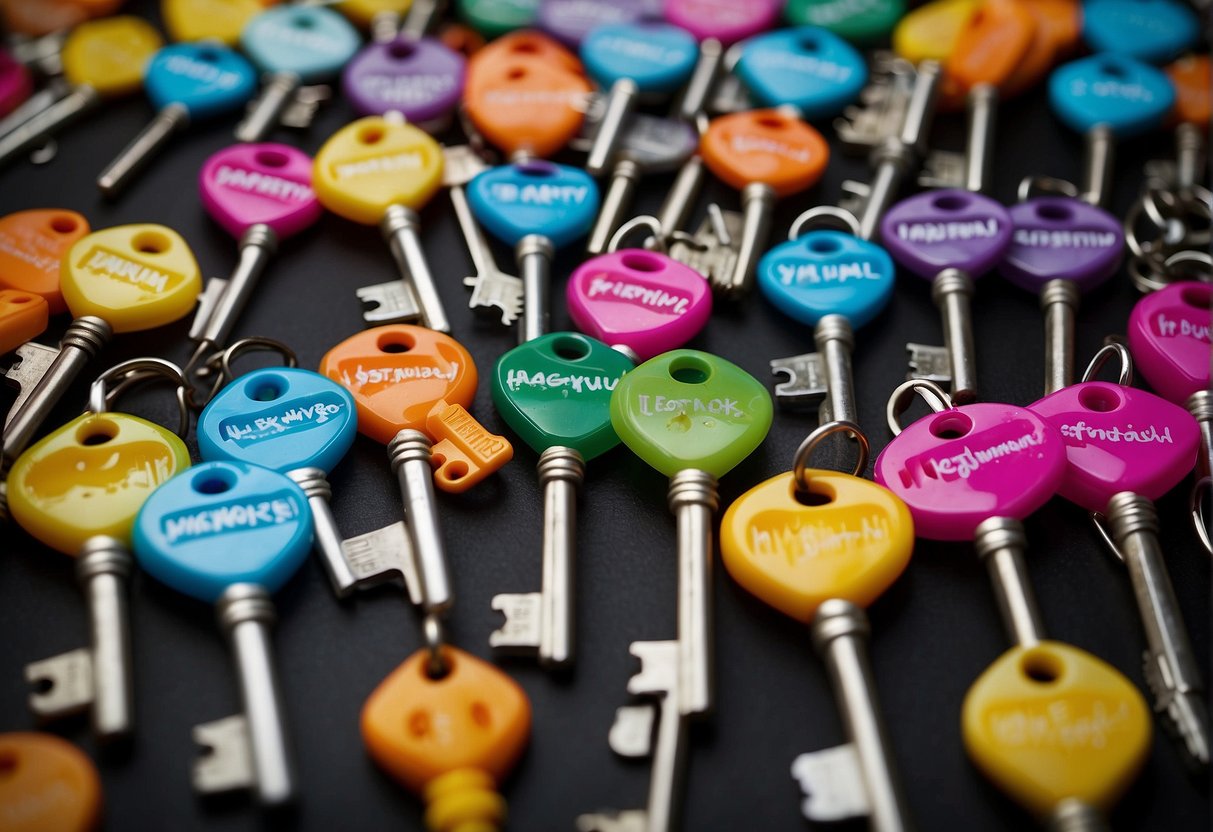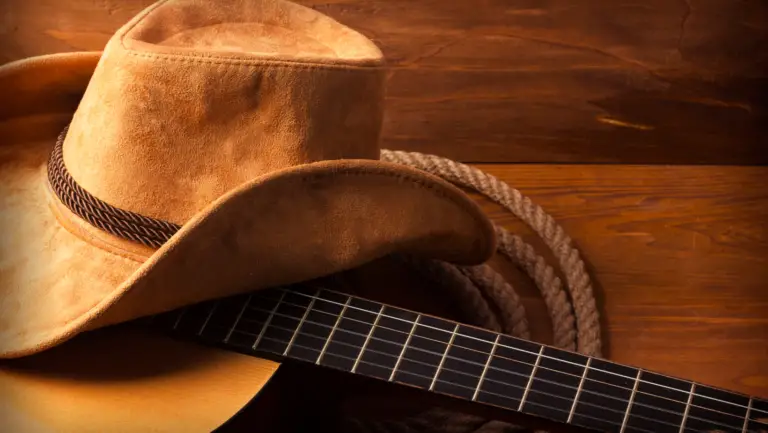Ever wondered ‘What Kind of Keys do Kids Like to Carry? Our article sheds light on the playful preferences of youngsters and their special set of keys.
Types of Keys Kids Enjoy

Your little ones have a big imagination and the world of keys is no exception. Whether it’s the thrill of unlocking a door to an imaginary castle or the joy of pressing colorful buttons on a toy piano, keys provide a world of possibilities for play and learning.
Imaginary Keys
With imaginary keys, your child holds the magic key to unlock any door in their make-believe world. These aren’t physical keys, but rather the ones conjured up in the limitless realm of your kid’s imagination. They might pretend a stick is a skeleton key to an ancient treasure chest or use their fingers to mimic turning a key in an invisible lock—the possibilities are endless!
Toy Keys
Realistic yet safe, toy keys are an excellent choice for kids who want to mimic adults. These keys often come as part of a set, complete with a toy lock or even a toy car they can ‘start up’. For the musically inclined, a mini keyboard or piano can be their set of keys, helping them develop an interest in music while they play with keys that produce different sounds and melodies.
Riddles and Games Involving Keys

Engaging with riddles and games about keys isn’t just fun, it’s also a playful exercise in critical thinking and problem-solving. In this section, you’ll find two types of brain-teasing activities: key-themed riddles that challenge your wit and educational key games that combine learning with play.
Key-Themed Riddles
Key-themed riddles often involve puns or creative thinking to find the connection between the key and the answer. For example, “What kind of keys do kids like to carry?” taps into imaginative scenarios where the answer itself is a delightful twist. Here are some riddles that will keep you pondering:
- Cookie Riddles: “What key is the most delicious?” – The answer to this riddle could be a whimsical twist, connecting cookies and keys.
- Skeleton Riddles: These riddles are perfect for having a good time during Halloween or when learning about the human body.
- Alphabet Riddles: These riddles typically play with letters and spelling, such as “What kind of key opens a banana?” with the answer being a key aspect of the riddle itself.
- Kindergarten Riddles: These are designed to be simpler for young minds, like “What kind of room has no doors or windows?” or “How can you carry a tree in your hand?”.
Educational Key Games
Educational key games merge playtime with learning opportunities to enhance cognitive skills.
- What Key Am I?: This game involves describing the function or shape of different keys, and children guess the type of key being described. It’s a great way to learn about various keys and their purposes.
- Treasure Hunt: Give clues that lead to finding a ‘key’ that opens a treasure chest. Along the way, introduce them to interesting facts about keys, such as “Clean Teeth Riddle”: “I’m a key but I can clean. What am I?” Hinting towards something that unlocks the clean feeling after every meal.
In both riddles and games, the inclusion of keys serves as a gateway to education, and your involvement can unlock various levels of understanding and enjoyment.
Creative Learning with Key Concepts

When exploring the question, “What kind of keys do kids like to carry?” the answer often lies in the intersection of creativity and learning. By engaging in role-playing scenarios and crafting projects, not only do children grasp the concept of keys, but they also stretch their imaginations to include the keys of creativity.
Role-Playing Scenarios
Imagine you’re a deep-sea diver, and your treasure is locked behind a door underwater. It would be best if you had a special key to open it. This could be a fish-shaped key, symbolizing the importance of adapting to the environment. In role-playing, you could create a game where the palm tree is the guardian of the keys, and each key opens a gate to different marine wonders.
- Objective: Find the fish-shaped key to unlock the treasure.
- Setting: Underwater scene with coral reefs and a guarding palm tree.
- Challenge: Navigate without disturbing the marine life, illustrating respect for oceanic habitats.
Role-playing such creative scenarios can instill in kids the concept of responsibility and environmental awareness while having fun with imaginative keys.
Crafts and Projects
Get crafty with your kids by constructing skeleton keys from cardboard or clay. These projects can be hands-on experiences related to riddles like “What kind of keys do kids like to carry?” One idea is to bake key-shaped cookies, allowing your children to learn about kitchen safety and measurements. Children will enjoy creating these tangible keys and might even develop an interest in culinary arts.
Project 1: DIY Skeleton Keys
- Materials: Cardboard, paint, glitter.
- Steps: Cut cardboard in the shape of a key, decorate with paint and glitter.
Project 2: Key-Shaped Cookies
- Ingredients: Cookie dough, key-shaped cutter.
- Process: Roll out dough, cut out key shapes, bake, and then decorate.
Such creative projects provide a hands-on learning experience for your child to playfully connect with the concept of keys as symbols of discovery and access.
Frequently Asked Questions
In this section, you’ll find answers to common questions about kids’ fascination with keys. Whether it’s for play, exploration, or imitation, keys hold a certain allure for the younger crowd.
What attracts children to keys that they often want to carry?
Children are often drawn to keys because they are shiny, make jingling sounds, and are usually seen in the hands of adults. To a child, keys represent access and control, traits they observe and wish to emulate.
Can you explain the game where kids carry keys?
Certainly, children may play games that involve carrying keys as a prop or a treasure to be found. These pretend-play scenarios allow them to feel a sense of responsibility and adventure.
Why are keys so fascinating to children?
Keys fascinate children due to their varied shapes, functions, and the mystery of what they unlock. They are tangible objects that serve as tools for grown-up activities, sparking children’s curiosity.
What is it about keys that make them popular with young kids?
Young kids are attracted to keys as they are often among the first real-world objects that interact with other objects, such as locks and doors. This interaction introduces cause and effect to children in a practical way.
Could you describe the appeal of keys in children’s games?
In children’s games, keys can serve as important props that represent power or victory. For instance, finding a key in a game might mean unlocking a treasure or completing a mission, adding excitement to their play.
What explains the common interest kids have in carrying keys?
The common interest in carrying keys among kids can be explained by their desire to imitate adults and feel empowered. Holding keys can make a child feel more grown-up and responsible, just like their role models.






